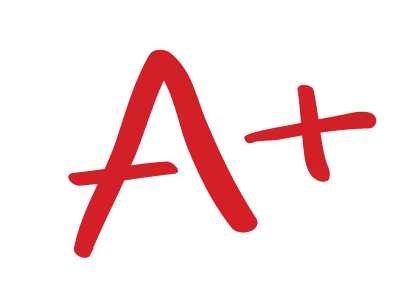Problem 1: Prisoners’ Dilemma Revisited
Consider the Prisoners’ Dilemma game as shown on page 1 of the class handout “Simultaneous
WRITE THIS ESSAY FOR ME
Tell us about your assignment and we will find the best writer for your paper.
Get Help Now!Move Games”. Suppose the same game is played sequentially, with Firm Aplaying first,
followed by Firm B
(a)Draw the game in extensive form (i.e., as a game tree). Draw appropriate arrows on thegame tree and circle the equilibrium payoffs.
(b) List all strategies available to Firm B.
(c) State the subgame-perfect equilibrium. (Warning: equilibrium ≠ equilibrium outcome.)
(d) Identify the equilibrium outcome. ___________________________________________
(e) Is the equilibrium outcome here different from the equilibrium outcome in the simultaneousmoveversion of the game? Yes / No
Problem 2: Capacity Competition
Consider the simultaneous-move capacity game between Honda and Toyota from Assignment 1.
Suppose the same game is played sequentially, with Honda moving first.
- Draw the game in extensive form. Draw appropriate arrows on the game tree and circle theequilibrium payoffs.
(b) What is the total number of strategies available to Toyota? _______________
(c) Identify the subgame-perfect equilibrium.
(d) Relative to the simultaneous-move game, is there first-mover advantage here? Yes / No
Problem 3: Line-Item Veto for the President
There are two distinct spending proposals being debated by the federal government. Congresslikes proposal A, and the President likes proposal B. The proposals are not mutually exclusive:either or both may become law. The rankings of the outcomes (payoffs) for each side are shownbelow, where a larger number represents a more favored outcome.
| Outcome | Congress | President |
| Only A becomes law | 4 | 1 |
| Only B becomes law | 1 | 4 |
| Both A and B becomes Law | 3 | 3 |
| Neither (status quo prevails) | 2 | 2 |
- The moves in the game are as follows. First, Congress decides whether to pass a bill andwhether it is to contain A or B or both. Then, the President decides whether to sign or vetothe bill. Congress does not have enough votes to override a veto. Draw a tree for this gameand mark appropriate arrows on the tree to enable the determination of the subgame-perfectequilibrium.
State the subgame-perfect equilibrium outcome. (Recall that an outcome is specified by
actions taken by each player, not by the payoffs.)
- Next, suppose the rules of the game are changed in only one respect: the President is giventhe extra power of a line-item veto. Thus, if Congress passes a bill containing both A and B,the President may choose not only to sign or veto the bill as a whole, but also to veto just oneof the two items. Show the new game tree and mark appropriate arrows on the tree to enablethe determination of the subgame-perfect equilibrium.State the subgame-perfect equilibrium outcome.
Problem 4: Ultimatum Game
A pie worth 100 units is to be split between Players A and B. Player A proposes a number X suchthat Player A gets X units and Player B gets 100 – X (where X is an integer and 1 ≤ X ≤ 99).
Player B plays next and can either accept or reject Player A’s proposal. If Player B accepts, thenthe pie is split as proposed by Player A. If Player B rejects, then, each player gets zero units.
(a) How many strategies are available to Player A? _____________
(b) How many strategies are available to Player B? _____________
(c) State the subgame-perfect equilibrium outcome.
(d) State the subgame-perfect equilibrium.
(Note: Even if a strategy consists of multiple parts, it can often be fully summarized in a
compact manner. Sometimes, this can be accomplished by “Always . . . ”, sometimes by ajudicious use of “If/Then” statements.)
Problem 5: Cake Cutting
A cake worth 100 units is to be split between Players A and B. Player A plays first and cuts thecake into two pieces, a Left piece worth X units and a Right piece worth 100 – X units, where X(is an integer and 1 ≤ X ≤ 99) to be selected by Player A. Player B plays next and must selectbetween one of the two pieces: Left or Right. Player A automatically receives the remainingpiece.
(a) How many strategies are available to Player A? _____________
(b) How many strategies are available to Player B? _____________
(c) State the subgame perfect equilibrium outcome(s).
(d) State the subgame perfect equilibria.
(Note: Even if a strategy consists of multiple parts, it can often be fully summarized in a
compact manner. Sometimes, this can be accomplished by “Always . . . ”, sometimes by ajudicious use of “If/Then” statements.)
Introducing our Online Essay Writing Services Agency, where you can confidently place orders for a wide range of academic assignments. Our reputable homework writing company specializes in crafting essays, term papers, research papers, capstone projects, movie reviews, presentations, annotated bibliographies, reaction papers, research proposals, discussions, and various other assignments. Rest assured, our content is guaranteed to be 100% original, as every piece is meticulously written from scratch. Say goodbye to concerns about plagiarism and trust us to deliver authentic and high-quality work.



